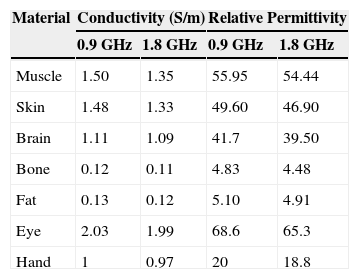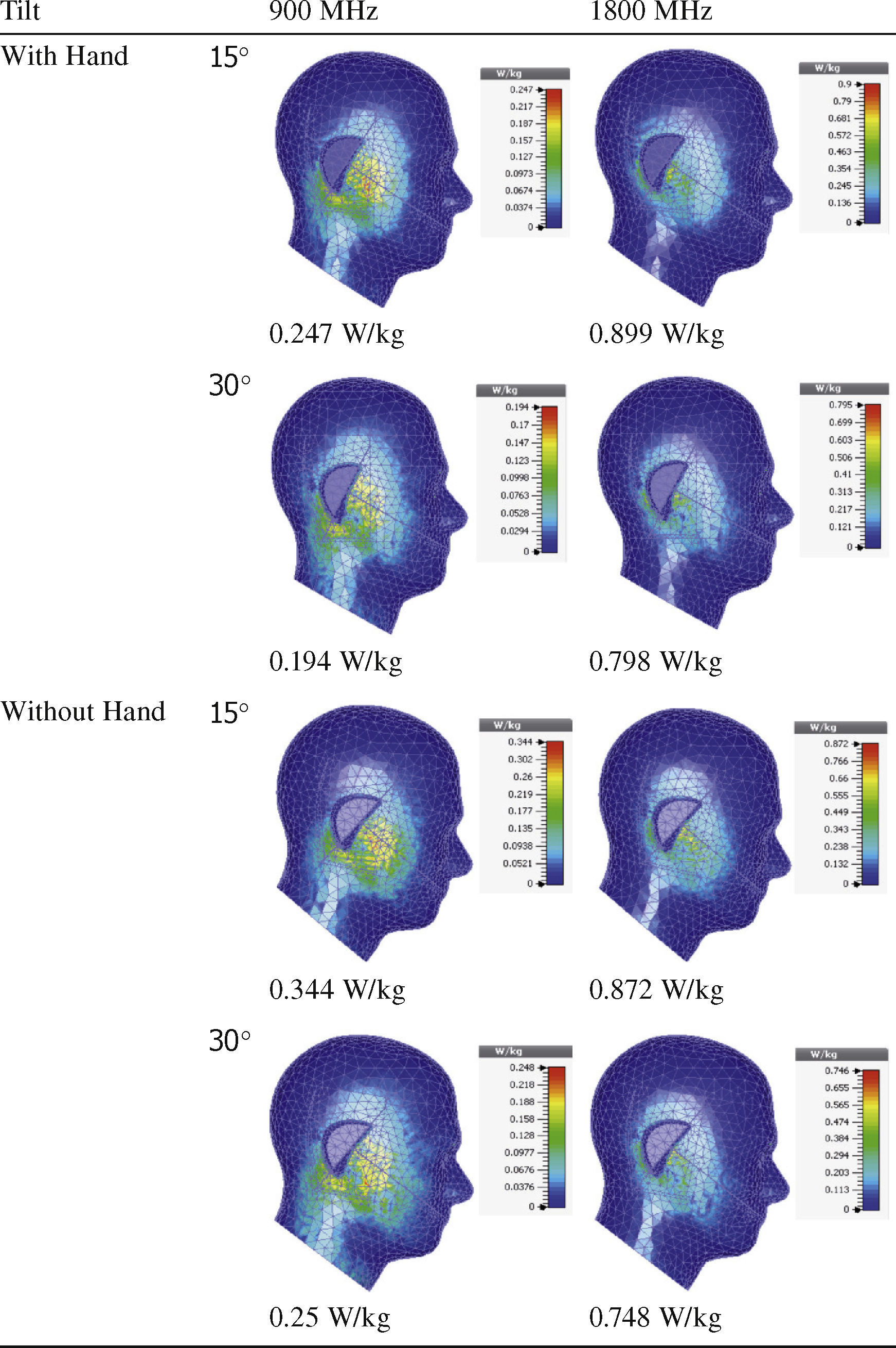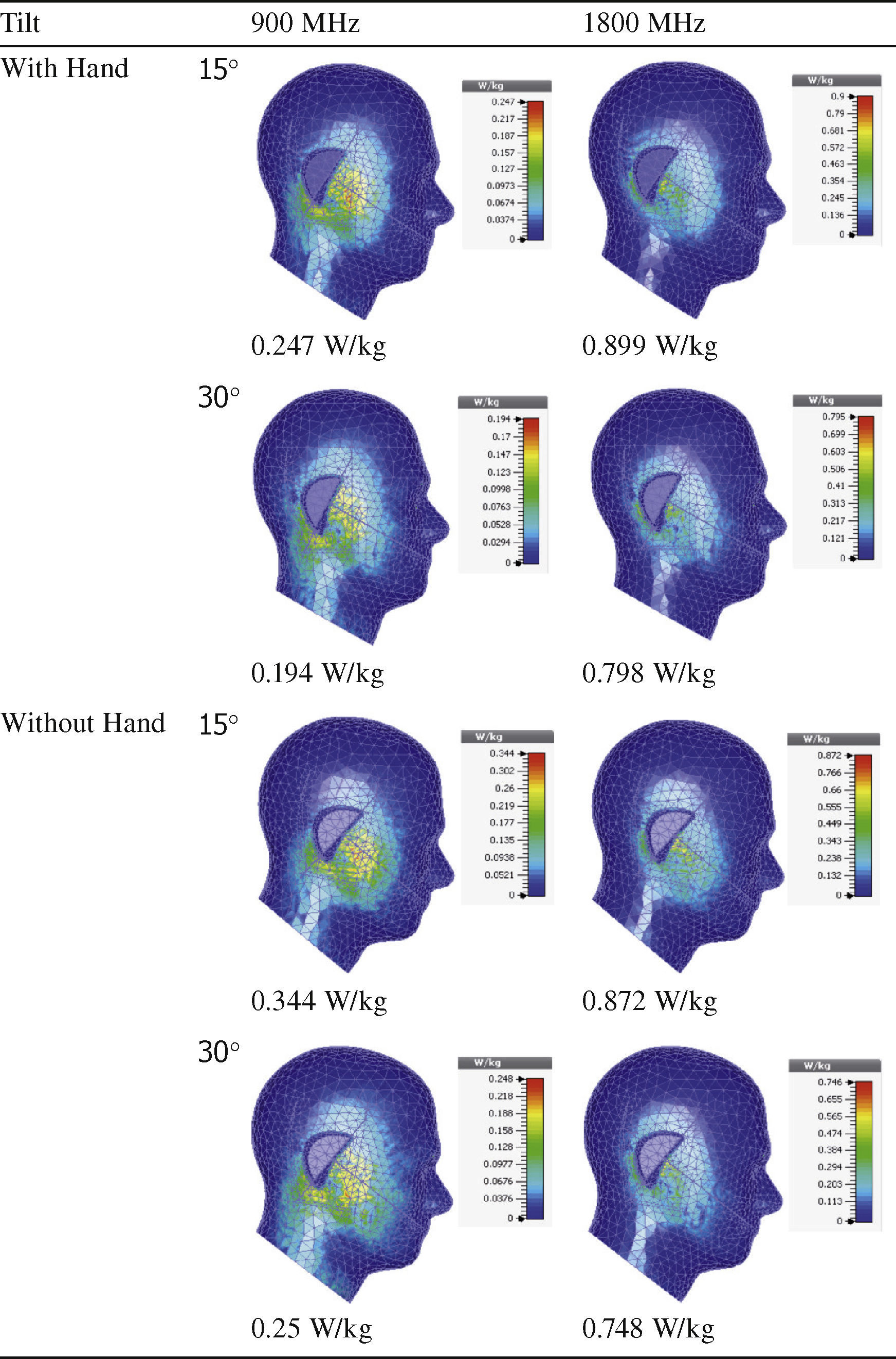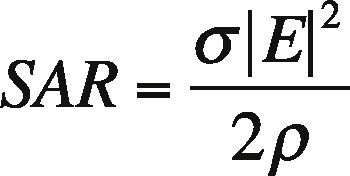The aim of this investigation is to analyze the effects of hand on planar inverted-F antenna (PIFA) electromagnetic (EM) absorption and performances. The EM absorption is evaluated by using two parameters: the specific absorption rate (SAR) in the human head and total absorbed power by the user. The antenna performance parameters comprising return loss, radiation efficiency, and gain are considered in this investigation. The analysis was performed using mobile phone with a human head and hand model in both cheek and tilt positions of talk mode. The results show that the inclusion of hand model leads to decrease the SAR and increase the total absorbed power by user remarkably. The hand phantom leads maximum 27.2% SAR reduction in both cheek and tilt positions of talk mode. Moreover, the hand phantom contributed to increase the total power absorption more than two times in both cheek and tilt positions. The user's hand also leads to degrade antenna performances considerably. Moreover, the presented analysis provides some useful indication to design handset antenna considering hand effects.
The portable terminal devices like cell phone are being popular day by day and hence the number of cell phone users is increasing dramatically. The antennas of the cellular devices receive and radiate electromagnetic (EM) energy of different frequency depending on the type of applications. The emitted EM energy from portable terminal device's antenna may cause serious health hazards (Repacholi, 2001). Because, the EM energy can penetrate human tissues and a part of the energy is absorbed in the body. The power absorption by human body tissue is usually evaluated in terms of specific absorption rate (SAR) (Hossain et al., 2015). The safety limits of the SAR values for portable devices are imposed by the Federal Communication Commission (FCC) in USA and International Commission on Non-Ionizing Radiation protection (ICNIRP) in Europe. The SAR values can be affected by varying antenna geometry, radiated power, frequency of exposure, spacing between antenna and human head, and exposure medium (Faruque et al., 2014). The easiest way to reduce the SAR is to increase the spacing between the antenna and human body (Kivekas et al., 2004). On the other hand, a number of EM absorption reduction techniques such as conductive shielding, ferrite shielding, electromagnetic band gap (EBG) surface, and metamaterial techniques can be applied to reduce the EM radiation effects on human health (Hossain et al., 2014).
The human body acts as a lossy dielectric medium. The relative permittivity of biological tissues are high compared to the permittivity of air (Valkonen et al., 2011). The relatively high permittivity of the human hand (holding mobile phone) can change of impedance in the near field zone of the antenna. In addition, the human body tissues have also a high water content, which makes them moderately conductive. The conductive properties of human hand causes losses at microwave frequencies. So, the inclusion of the hand model definitely affects antenna performances (Ilvonen et al., 2011). In Li et al. (2009), an investigation of effects of hand phantom on planar inverted-F antenna (PIFA) and helical antenna was presented. The results indicated that hand phantom leads to affect antenna performances depending on the position of hand with respect to mobile phone antenna. The user's hand can cause shifting the resonance frequency, reducing the channel data rate and detuning the antenna input impedance (Zhao et al., 2013). In Vehovsky et al. (2014), an analysis of hand effects on the resonance characteristics of dual band PIFA was presented. The results showed that the hand phantom brought slight impedance matching deterioration for both GSM frequency bands. Additionally, the presence of the user's hand lead to less conservative SAR values. The human hand reduces the SAR values to the head tissues, as it dissipates a part of radiated power of antenna (Okoniewski & Stuchly, 1996). The effects of hand holding position on the EM interaction between mobile phone and human was investigated in Al-Mously and Abousetta (2009). The obtained results indicated that the SAR values remarkably change in consequence of the positioning of the mobile phone against the human head at different hand levels.
The objective of this analysis is to investigate the effects of the human hand on PIFA EM absorption characteristics and performances for two different GSM frequency bands. Two parameters (SAR and total absorbed power) are used to explain the EM absorption characteristic. The commonly used cheek and tilt position of talk mode are used to simulate the handset antenna with the user's head and hand phantoms. Moreover, the effects on the antenna performance parameters comprising radiation efficiency and gain were investigated to evaluate the effects of hand phantom on antenna performances.
2Method and MaterialsA dual band GSM (0.9GHz and 1.8 GHz) PIFA is designed for the investigation. The antenna with circuit board, LCD display and plastic mobile cover was used in this investigation. The antenna consists of patch, ground, feed and shorting point. The dimensions of patch are 40 × 20 × 0.3mm, which is made with copper sheet. The distance between the substrate and patch is 8mm, and a plastic support is placed between them. The distance between feeding and shorting plane is 6mm, and the dimensions of shorting plane are 8 × 1 × 0.3mm. Figures 1A and B indicate the front view and 3D view of proposed PIFA with FR-4 substrate respectively.
The electrical properties of handset elements were taken to comply with industry standards as indicated in Table 1. The three-dimensional anatomical models were used for head and hand phantom. The head model provided by the whole brain atlas website is used in this investigation. The head phantom consists of various types of tissues: bone, brain, skin, muscle, fat, and eye. The electrical properties of head and hand model are listed in Table 2 (Quispe-Siccha et al., 2012). The head and hand dielectric properties were set in accordance with the frequency of exposure. The numerical simulation of SAR values and other antenna performance parameters were evaluated adopting the finite-difference time-domain (FDTD) method of the Computer Simulation Technology (CST) Microwave Studio. The Figure 2 shows the simulation setup indicating the relative positions of the mobile handset, human head and hand phantom. For the calculation of SAR values, following standard formula was used (Faruque et al., 2014):
Electrical properties of human head and hand phantoms.
| Material | Conductivity (S/m) | Relative Permittivity | ||
|---|---|---|---|---|
| 0.9 GHz | 1.8 GHz | 0.9 GHz | 1.8 GHz | |
| Muscle | 1.50 | 1.35 | 55.95 | 54.44 |
| Skin | 1.48 | 1.33 | 49.60 | 46.90 |
| Brain | 1.11 | 1.09 | 41.7 | 39.50 |
| Bone | 0.12 | 0.11 | 4.83 | 4.48 |
| Fat | 0.13 | 0.12 | 5.10 | 4.91 |
| Eye | 2.03 | 1.99 | 68.6 | 65.3 |
| Hand | 1 | 0.97 | 20 | 18.8 |
where, σ represents the conductivity of head tissue, E denotes the root mean square (rms) of induced electric field strength, and ρ is tissue density.
The SAR values averagedover 1g biological tissue were evaluated adopting IEEE standard algorithm. The stimulated power 0.5W was used in experimental set-up and the SAR calculation was performed in the post processing phase of the simulation. In lossy-Drude simulation model, 128 × 128 × 128 cells domain was used with cell size were Δx = Δy = Δz = 3mm.
The mesh density control of line per wavelength of 8, mesh line ratio limit of 200. A total of 6,211,119 mesh cells was generated, and the simulation time was 8208 s for each run on an Intel CoreTM i5 3470 3.20GHz CPU with 4 GB RAM.
3Results and Discussion3.1Effects of Hand on SARThe effects of the human hand on SAR values were studied for cheek and tilt position of talk mode. Only 1g SAR value is presented in this paper for all cheek and tilt position analysis. The total absorbed power by head was also studied in every case so that the effect of hand could be separated clearly. The results of effects of hand on the SAR are presented in two subtitles: cheek position analysis and tilt position analysis.
3.1.1Cheek Position AnalysisIn cheek position analysis, two different distances (16mm and 18 mm) of mobile phone from the head axis were considered both for without the hand and with hand simulation setup. Table 3 represents the SAR results with 3D SAR distribution in head and Figure 3 represents the total absorbed power values by the user for different cheek positions. The results exhibit that the SAR values are reduced significantly due to the presence of a user's hand in all cases comparing with without hand configuration. In a cheek position of the cell phone with 16mm apart from the user's head axis, the SAR reduction occurs 27.2% at the lower GSM frequency band and 2.7% at the upper GSM frequency band. The results also show that the SAR values for the upper frequency band are less affected than that of the lower frequency band. Moreover, cheek position of 18mm contributes to reduce the SAR 27.6% at 0.9GHz and 6.21% at 1.8GHz. Increase in phone distance from the user's head reduces the SAR values in every case. It is also vital to mention that the percentage of SAR reduction due to user's hand is not affected greatly for lower frequency band for two different configurations. But the SAR reduction due to user's hand increases with increasing phone distance at the upper frequency band.
The standard SAR limit for portable devices are 1.6 W/kg averaged over 1g tissue mass and 2 W/kg in a 10g averaging mass (Commission and others, 2001). The 1g SAR standard is specified by the FCC and 10g SAR limit is set by the ICNRIP. The results indicate that the calculated 1g SAR values of all configurations are below the standard SAR limit.
The total power absorbed by the user increases after using the hand phantom with the head model. In case of cheek position with 16mm phone distance, power absorbed by the user was 32.2% for with hand configuration and 14.6% for without hand configuration of the lower frequency band. On the other hand, the power absorbed by the user was 66.6% and 26.6% of total radiated power for with and without hand configuration of the upper frequency band considering 16mm cell phone distance.
The results from 18mm cell phone distance also provide similar tendency as compared with the results from a 16mm distance configuration. The user's hand leads to absorbed power more than two times than that of without hand configuration in all cases. However, the inclusion of user's hand leads to reduce the SAR due to the fact that the hand absorb a significant amount of radiated power.
3.1.2Tilt Position AnalysisIn this section, 15° and 30° tilt position of the cell phone were investigated considering with hand and without hand configuration. Two distance configurations (16mm and 18 mm) were also used in the tilt position analysis. The results related to the SAR values have been presented in Tables 4 and 5. In case of different tilt position analysis, the SAR values decrease due the presence of the user's hand at 0.9GHz, but the SAR values increase at 1.8GHz. For 15° tilt position of 16mm distance, 27.2% SAR reduction can be obtained at the lower frequency band. On the other hand, the SAR increases 5.14% at the upper frequency band. In addition, 30° tilt position of 16mm distance configuration contributes to decrease the SAR 26.5% at 0.9GHz and increase the SAR 5.8% at 1.8GHz.
Sequentially, 28.2% reduction and 3% increment in the SAR are marked at 0.9GHz and 1.8GHz respectively, for 15° tilt position of 18mm distance configuration. 30° tilt position of 18mm distance configuration contributes to decrease the SAR 22.4% at 0.9GHz and increase the SAR 5.8% at 1.8GHz. The results from tilt positions of 20mm distance configuration show identical tendencies as two other configurations. The results indicate that the SAR values decrease significantly with increasing tilt angle. Moreover, 8.5% reduction in the SAR is obtained from 16mm to 18mm distance configuration in case of 15° tilt position at 0.9GHz. The SAR decreases 14.4% from 16mm to 18mm in case of 15° tilt position at 1.8GHz respectively.
The results of absorbed power by the user have been presented in Figure 4 for 16mm, and in Figure 5 for 18mm. In tilt position analysis, hand phantom leads to increase total absorbed power more than two times than that of without hand configurations. For 15° tilt position of 16mm, the total power absorbed by user increases 17.6% at 0.9GHz and 38.8% at 1.8GHz. In addition, 30° tilt position with hand of 16mm contribute to increase the total absorbed power 17.4% at the lower frequency band and 36.6% at the upper frequency band. The 18mm distance configuration also shows identical tendency as like as 16mm distance configuration. However, the inclusion of user's hand also leads to reduce the SAR in tilt position configurations. The hand phantom absorbs a considerable amount of radiated power and hence the absorbed power in the human head is reduced.
3.2Effects of Hand on Antenna PerformancesThe effects of hand on antenna performances were evaluated comprising two performance parameters: radiation efficiency and gain. Also, the results related to the antenna performance have been presented in two categories in this paper.
3.2.1Cheek Position AnalysisThe performance parameters of mobile phone were calculated for two different cheek positions (16mm and 18 mm). The radiation efficiency and gain decrease due to the insertion of hand model for all configurations of cheek position. Figure 6 represents the values of radiation efficiency and gain for cheek positions. At 0.9GHz, the radiation efficiency decreases 44.4% for 16mm phone distance, and 47.3% for 18mm phone distance. Additionally, the degradation of radiation efficiencies is 40.1% and 40.4% for 16mm and 18mm cell phone distance respectively at 1.8GHz. Moreover, the antenna gain degrade 2.83dB and 2.82dB for 16mm and 18mm distance configuration at the lower frequency band respectively.
Sequentially, 5.1dB and 4.98dB antenna gain degradation occur for 16mm and 18mm phone distance configuration at the upper frequency band respectively. The return loss characteristics of antennas for all configurations of cheek position are plotted in Figure 7. The results indicate a little bit variation in resonance points for with hand configurations compared to without hand configurations.
3.2.2Tilt Position AnalysisThe results from the tilt position analysis indicate that the radiation efficiency and gain degrade owing to insertion of the hand phantom as the cheek position analysis. The radiation efficiency is reduced 41.5% and 37.4% for 15° tilt configuration at 0.9GHz in case of 16mm and 18mm phone distance configuration respectively as shown in Figure 8. Sequentially, 40.8% and 40% degradation can be found for the radiation efficiency at 1.8GHz for 15° tilt position of 16mm and 18mm distance configuration respectively. For the increment in tilt angle (from 15° to 30°), radiation efficiency increases little bit for both with hand and without hand configurations. Additionally, the antenna gain degrades 1.6dB at 0.9GHz and 3.95dB at 1.8GHz for 15° tilt position of 16mm as indicated in Figure 9. The results also indicate that the antenna gain decreases a little bit due the increment in tilt angle (15° to 30°). Moreover, the radiation efficiency and gain improve little bit due to increase in cell phone distance. With the variation of tilt angle, antenna performance parameters show little variation.
The return loss characteristics of antennas for all configurations of 15° tilt position are plotted in Figure 10. The results indicate a little bit variation in resonance points for with hand configurations compared to without hand configurations.
4ConclusionsIn this study, the effects of the human hand on the SAR values and antenna performances have been presented using mobile handset of PIFA antenna. The results of all configurations show similar tendency that the user's hand affects the SAR values greatly at the lower frequency band and slightly at the upper frequency band. The maximum 27.2% SAR reduction is observed due to the inclusion of the user's hand in both cheek and tilt position. Moreover, the hand phantom leads to increase the total power absorption more than two times in both cheek and tilt position configurations. The hand phantom also leads to degrade the antenna performances significantly. More than 40% degradation in radiation efficiency is observed both for cheek and tilt positions. In addition, gain degradation is occurring, where the gain at the upper frequency band decreases extremely in both cheek and tilt positions of talk mode.
































